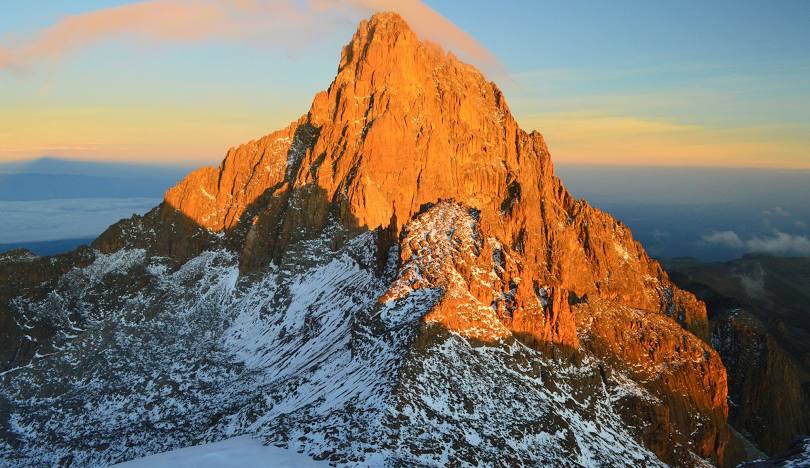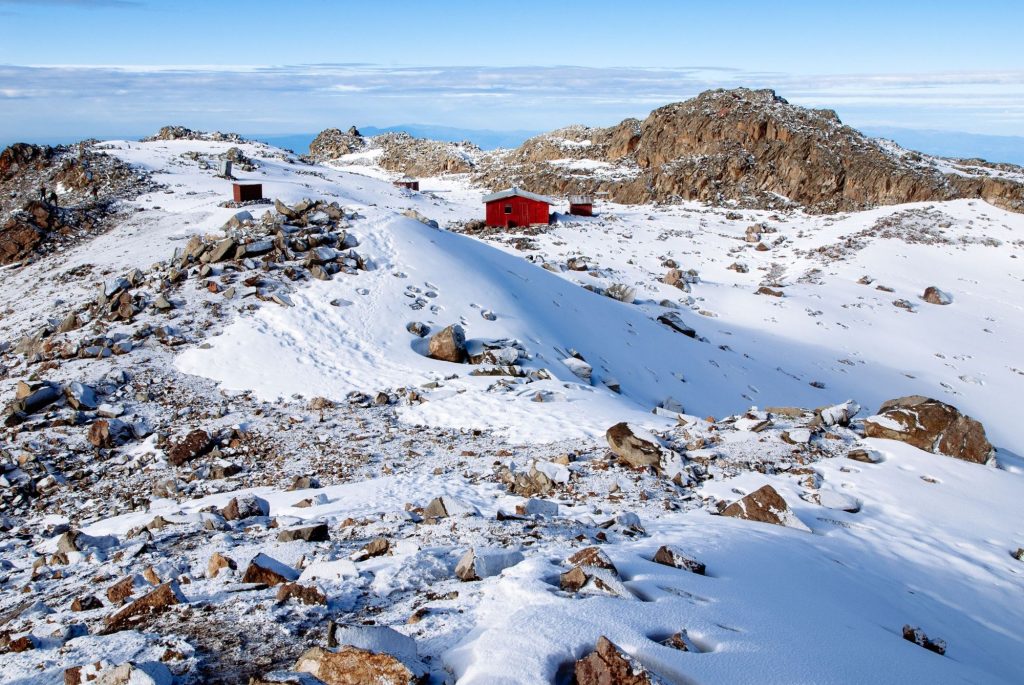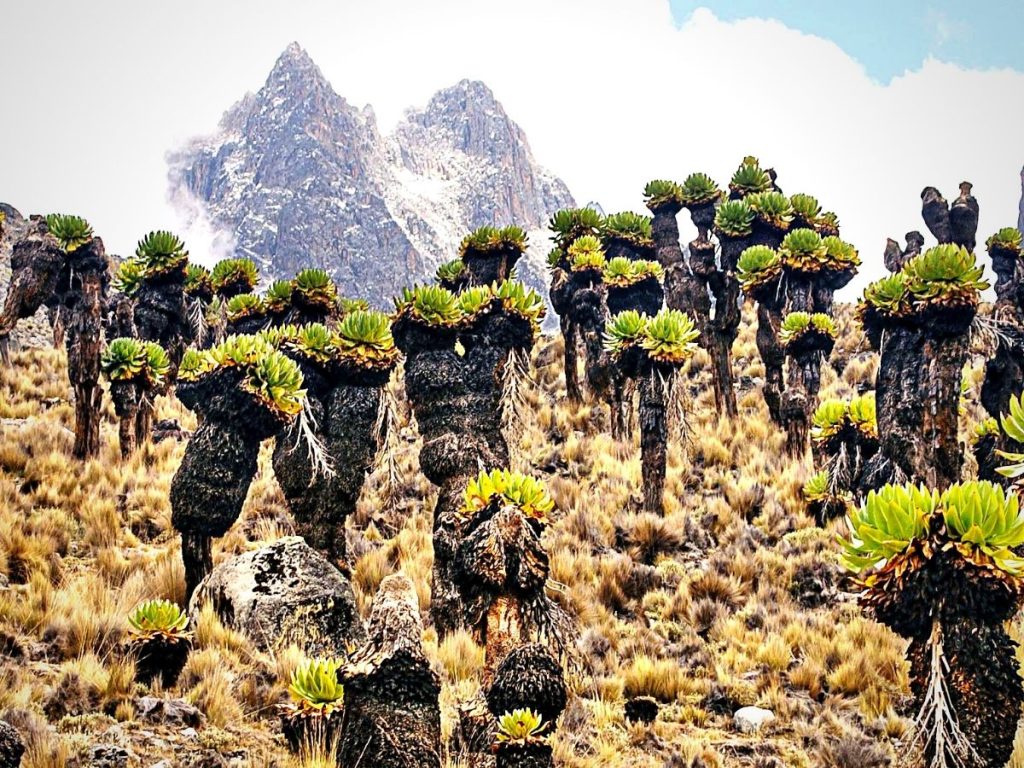Mount Kenya National Park
Mount Kenya, Africa’s second-highest peak, rises majestically in central Kenya, about 150 km north of Nairobi, within the Mount Kenya National Park, which covers approximately 715 km². This ancient extinct volcano, standing at 5,199m, is crowned with rapidly receding glaciers and surrounded by dramatic U-shaped glacial valleys, over 20 tarns, and striking moraine formations.
Its three iconic peaks—Batian (5,199m), Nelion (5,188m), and Point Lenana (4,984m)—dominate the skyline, challenging climbers and captivating explorers. As both a UNESCO World Heritage Site and Biosphere Reserve, its diverse ecosystems—from lush montane forests to alpine meadows—harbor unique flora and fauna, making it a geological masterpiece and a sanctuary of unparalleled ecological and scenic grandeur.

Mount Kenya National Park offers some of Kenya’s most breathtaking scenery, making it a top choice for trekking enthusiasts. A 4–5-day trek to its peaks is an unforgettable adventure, but for those short on time, a day trip to its scenic slopes adds a thrilling highlight to any Kenyan journey. Many travelers combine Mount Kenya with Lake Nakuru and the Maasai Mara, crafting a 1–2-week itinerary that blends mountains, wildlife, and iconic landscapes.
Activities in Mount Kenya National Park
- Mountain Climbing
- Birdwatching
- Walking safari
- Nature photography

Climate of Mount Kenya.
Mount Kenya’s climate varies dramatically with altitude, from a temperate 12°C to 15°C at lower elevations to subzero temperatures at the summit, where temperatures can plunge to -10 °C or lower. The mountain experiences two rainy seasons—the long rains from March to May and the short rains from October to December—with the wettest months being April and May. Snow and glaciers are prevalent above 4,500 meters, with distinct weather patterns shaping the alpine ecosystem. As you ascend, the weather shifts from lush, moist montane forests to harsh, dry alpine conditions, creating a striking contrast in the landscape and climate.

How to get there.
Mount Kenya National Park is 175 km from Nairobi and accessible by road via three major routes. Most travelers opt for a private driver, enjoying the scenic journey through Kenya’s highlands. The drive offers a chance to take in the lovely landscapes and local culture along the way.
For a faster alternative, Airkenya Express operates 35-minute flights from Wilson Airport in Nairobi to Nanyuki Airfield, located just outside the park. While flying significantly cuts travel time, many still prefer the flexibility of road travel. If you book with us, we’ll handle all your transport needs, ensuring a smooth and stress-free journey.
Facts about Mount Kenya.
- Mount Kenya stands at 5,199 meters (17,057 feet).
- Africa’s highest point.
- Established in 1949.
- The sacred throne of the Kikuyu god, Ngai.
- UNESCO World Heritage Site in 1997.
- Three Major Peaks, Batian (5,199m), Nelion (5,188m), & Point Lenana (4,984m).
The Story of Throne.
Mount Kenya is more than just a towering peak—it’s a sacred symbol deeply woven into the cultures of the people who live in its shadow. For the Kikuyu tribe, who inhabit the lush southern and western slopes.
This majestic mountain is the throne of their god, Ngai. So profound is their reverence that traditional Kikuyu homes were once built with doors facing the mountain, ensuring they always woke up to its divine presence.
To this day, Mount Kenya remains a spiritual landmark, its towering peaks standing as a timeless guardian over the land and its people.














